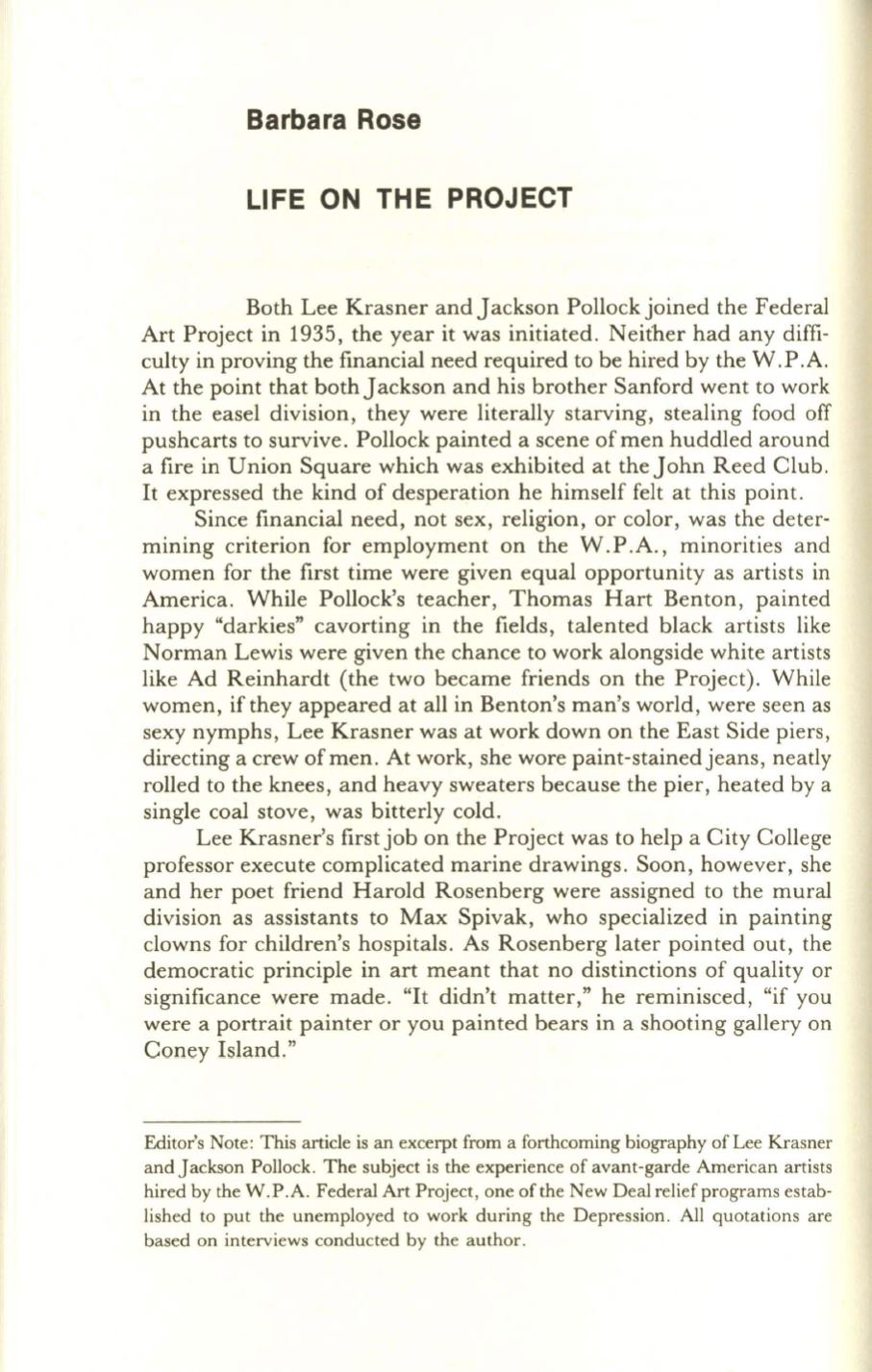
Barbara Rose
LIFE ON THE PROJECT
Both Lee Krasner and Jackson Pollock joined the Federal
Art Project in 1935, the year it was initiated. Neither had any diffi–
culty in proving the financial need required to be hired by the W.P.A.
At the point that both Jackson and his brother Sanford went to work
in the easel division, they were literally starving, stealing food off
pushcarts to survive. Pollock painted a scene of men huddled around
a fire in Union Square which was exhibited at the John Reed Club.
It
expressed the kind of desperation he himself felt at this point.
Since financial need, not sex, religion, or color, was the deter–
mining criterion for employment on the W. P .A., minorities and
women for the first time were given equal opportunity as artists in
America. While Pollock's teacher, Thomas Hart Benton, painted
happy "darkies" cavorting in the fields, talented black artists like
Norman Lewis were given the chance to work alongside white artists
like Ad Reinhardt (the two became friends on the Project). While
women, if they appeared at all in Benton's man's world, were seen as
sexy nymphs, Lee Krasner was at work down on the East Side piers,
directing a crew of men. At work, she wore paint-stained jeans, neatly
rolled to the knees, and heavy sweaters because the pier, heated by a
single coal stove, was bitterly cold.
Lee Krasner's first job on the Project was to help a City College
professor execute complicated marine drawings. Soon, however, she
and her poet friend Harold Rosenberg were assigned to the mural
division as assistants to Max Spivak, who specialized in painting
clowns for children's hospitals. As Rosenberg later pointed out, the
democratic principle in art meant that no distinctions of quality or
significance were made. "It didn't matter," he reminisced, "if you
were a portrait painter or you painted bears in a shooting gallery on
Coney Island."
Editor's Note: This article is an excerpt from a forthcoming biography of Lee Krasner
and Jackson Pollock. The subject is the experience of avant-garde American artists
hired by the W.P.A. Federal Art Project, one of the New Deal relief programs estab–
lished to put the unemployed to work during the Depression. All quotations are
based on interviews conducted by the author.


